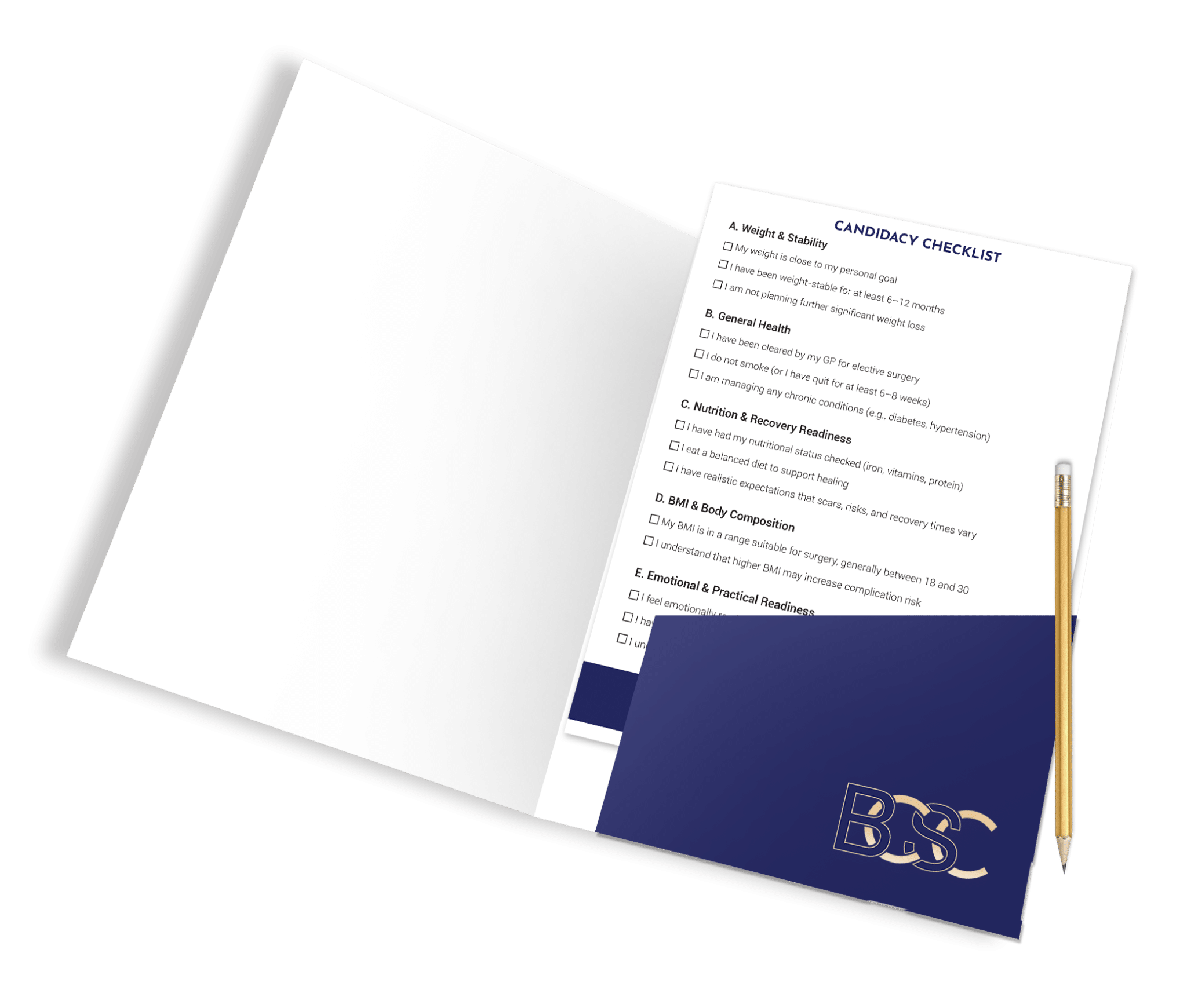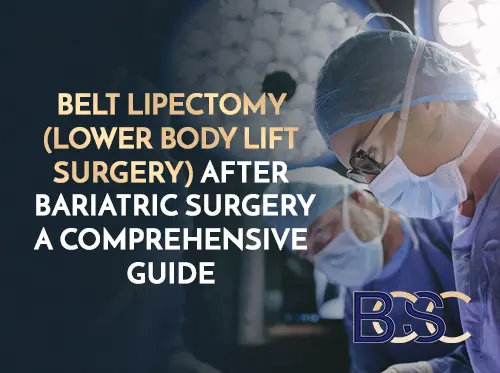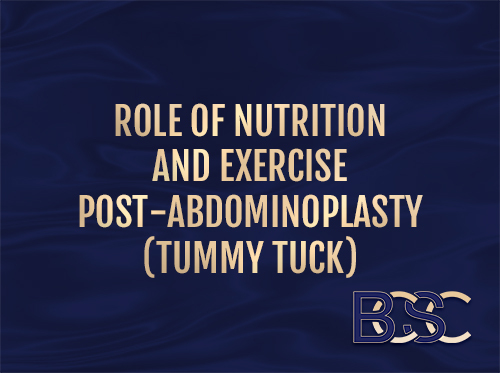The Recovery Process for Fleur-de-Lis Abdominoplasty Post-Weight Loss
A Fleur-de-Lis abdominoplasty (also known as a Fleur-de-Lis tummy tuck (abdominoplasty)) is a major surgical procedure performed to remove excess skin and tighten the underlying abdominal muscles after significant weight loss. This type of abdominoplasty surgery is a component of reconstructive surgery for patients with significant skin laxity following bariatric surgery, diet, or lifestyle changes. It can treat loose skin in both vertical and horizontal directions and may help comfort and abdominal wall function for some patients.
The Fleur-de-Lis abdominoplasty differs from a traditional abdominoplasty (tummy tuck) by including both a horizontal incision and a vertical incision. This allows for extensive skin removal from the lower and upper abdomen, which is often necessary after major weight loss. While this procedure may offer functional benefits, results vary between individuals, and recovery requires time, support, and medical supervision.
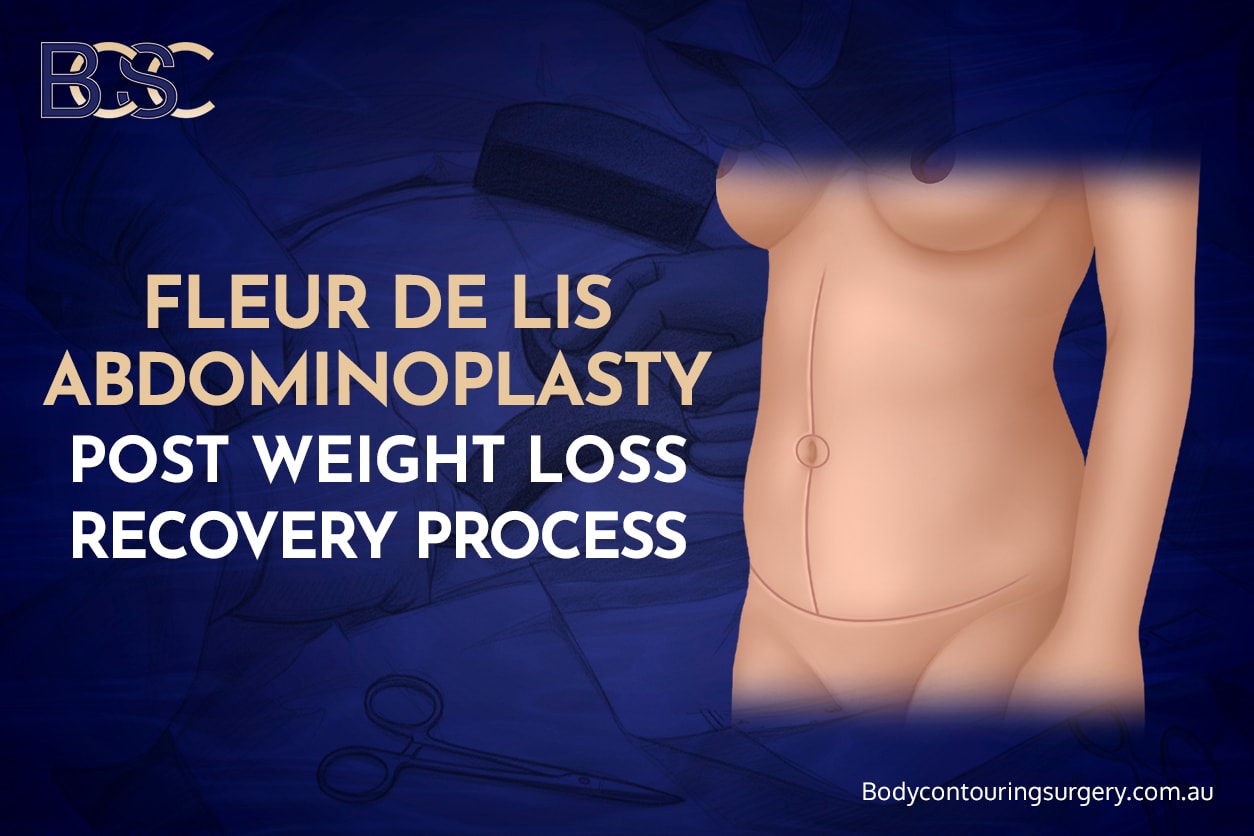
Fleur de lis abdominoplasty
At Body Contouring Surgery Clinic (BCSC), our Specialist General Surgeons (FRACS) perform this reconstructive surgery in fully accredited hospitals. Recovery begins the moment surgery ends, but preparation before surgery plays an important role in supporting an optimal healing process and a structured recovery journey.
Preparing for Recovery Before Surgery
The recovery process starts before surgery. Being physically and mentally prepared can influence the healing process and overall recovery time. Patients who maintain a stable weight, follow a balanced diet, and stay active are often better positioned for a consistent recovery experience.

Optimise your health pre surgery
Preparation includes:
- Following a healthy diet with protein, vitamins, and hydration encourages wound healing and tissue repair.
- Maintaining light exercise to support blood flow and help prevent blood clots after surgery.
- Avoid smoking and limit alcohol to support proper healing.
- Reviewing medical history with your surgeon.
Emotional readiness is also important. Understanding the expected recovery process, setting realistic expectations, and organising home support during the initial recovery period are key to optimal recovery.
The Operation and Hospital Stay
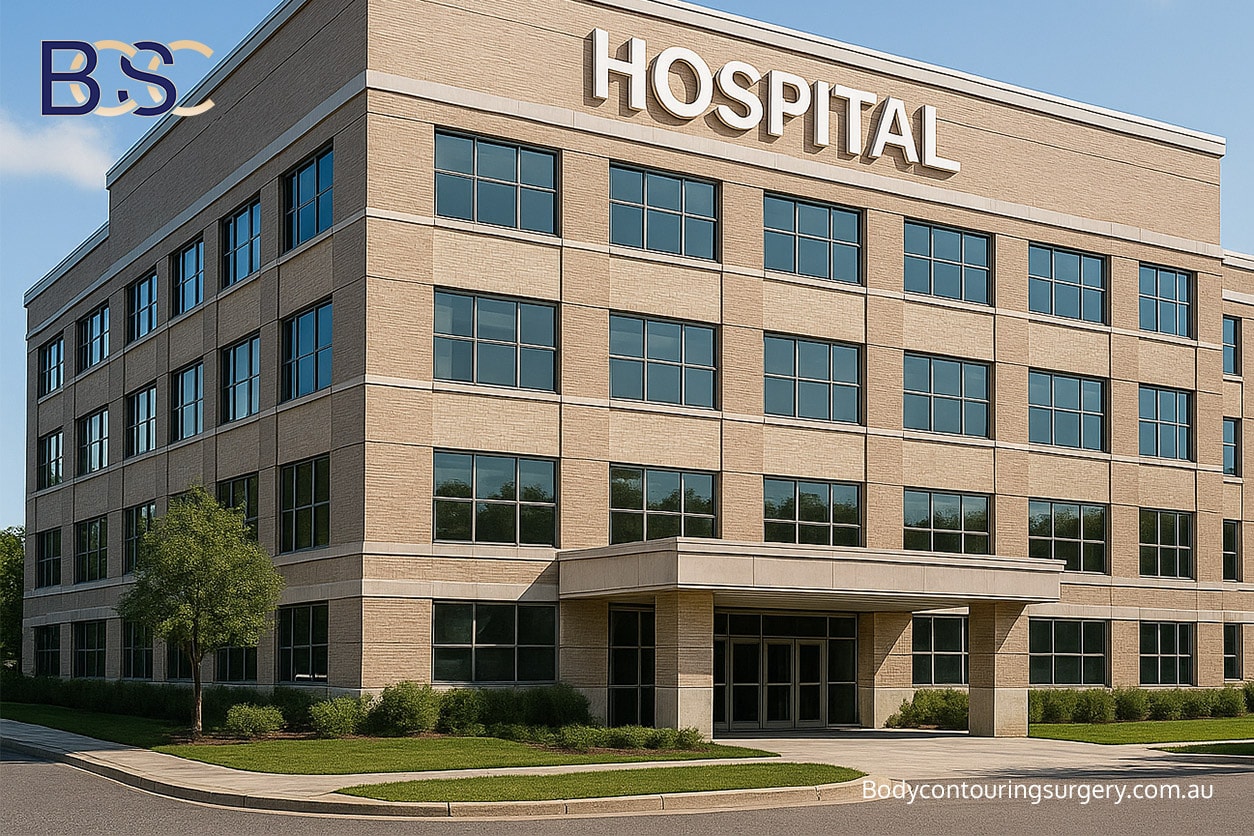
Fully accredited Private Hospital
During the operation, the surgeon removes excess skin through a horizontal incision across the lower abdomen and a vertical incision running up the midline. These incisions allow for the removal of excessive loose skin and the tightening of the underlying abdominal muscles, which can become stretched after major weight loss.
The procedure is performed under general anaesthesia and may take several hours, depending on whether additional procedures such as liposuction (suction-assisted lipectomy) or hernia repair are included. Surgical drains are usually placed to remove excess fluid and promote proper healing.
Following Fleur-de-Lis abdominoplasty surgery, most patients stay in the hospital for 2 to 4 days. During this time, the clinical team focuses on pain management, wound care, and early mobility. Patients receive prescribed pain medication to manage discomfort and enable mobilisation. Compression garments are used to reduce swelling, support the abdominal region, and promote optimal healing.
Hospital Care and the Initial Recovery Period
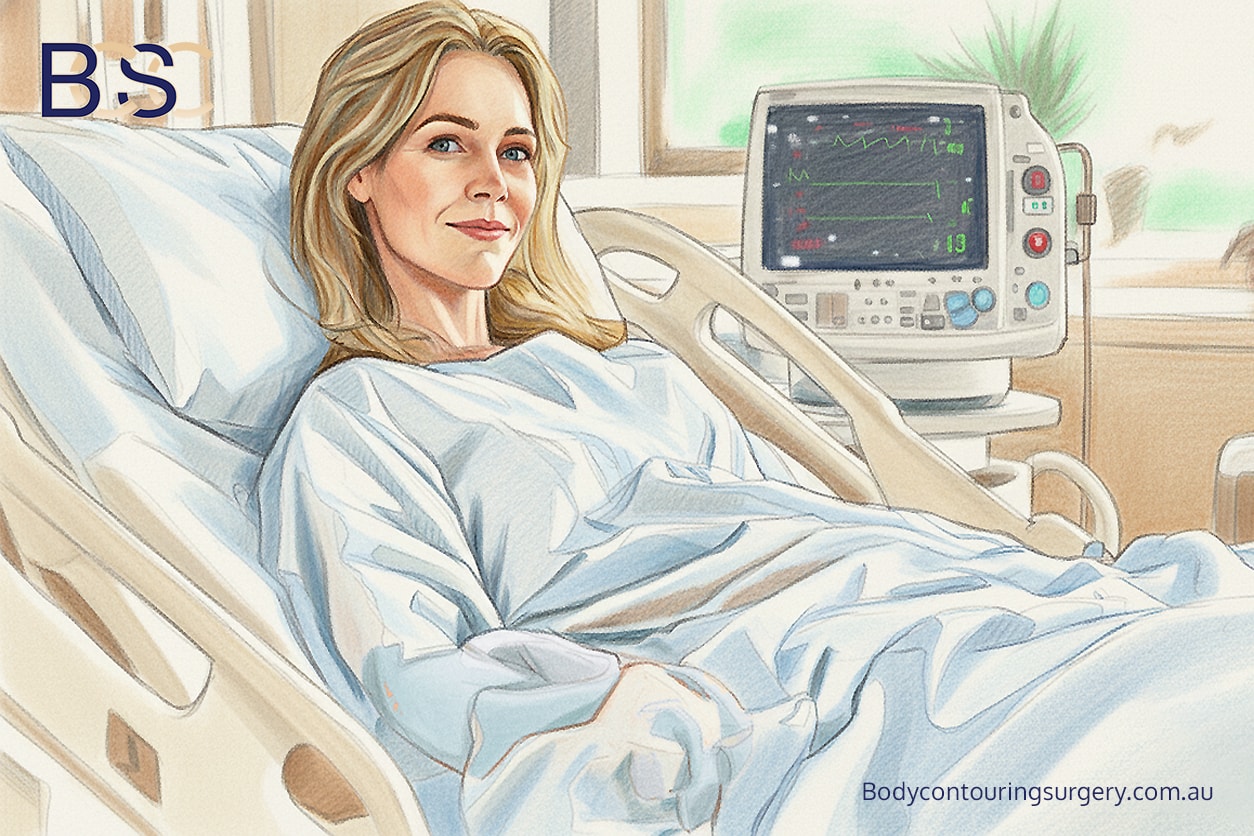
Post surgical recovery
In the first few weeks, patients may feel tightness in the lower abdomen and experience limited mobility. The initial recovery period involves gentle walking, breathing exercises, and continuous monitoring by the care team. Most patients experience mild to moderate discomfort, which generally changes as the healing process continues.
Drains are removed when fluid output decreases, usually within the first week. Compression garments should be worn continuously to help manage swelling and protect incisions. Early movement and attention to circulation reduce the risk of blood clots.
BCSC’s surgeons and nursing staff conduct daily hospital rounds to review pain management, monitor wound healing, and identify complications.
Procedures That Can Influence Recovery
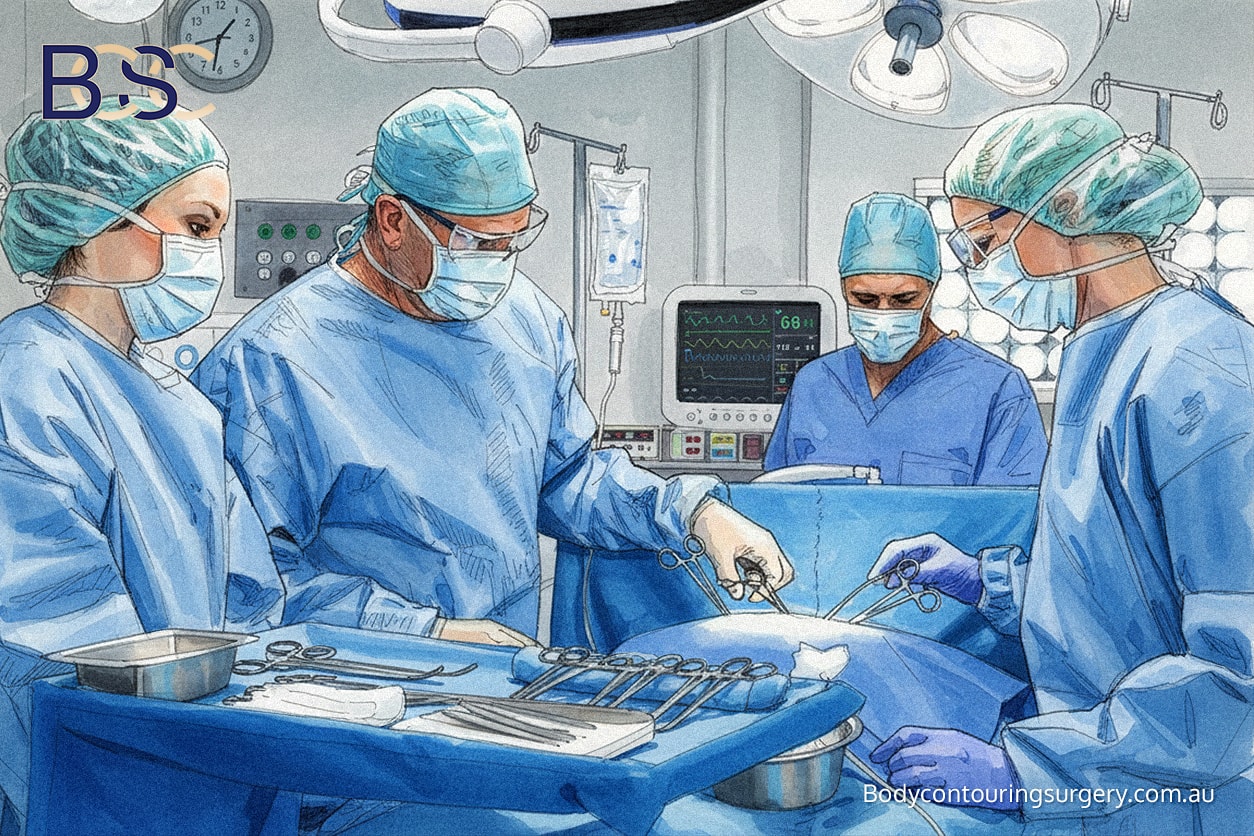
Specialist Surgeon
Each patient’s recovery process is unique. The recovery period can vary depending on additional procedures performed alongside Fleur-de-Lis abdominoplasty:
- Liposuction (suction-assisted lipectomy) may help remove residual fat deposits but can increase swelling or temporary numbness.
- Hernia repair may be added to strengthen the abdominal wall.
- Diastasis recti repair tightens the underlying abdominal muscles that have separated due to pregnancy or previous weight changes.
Post-Discharge Care and Follow-Up Appointments
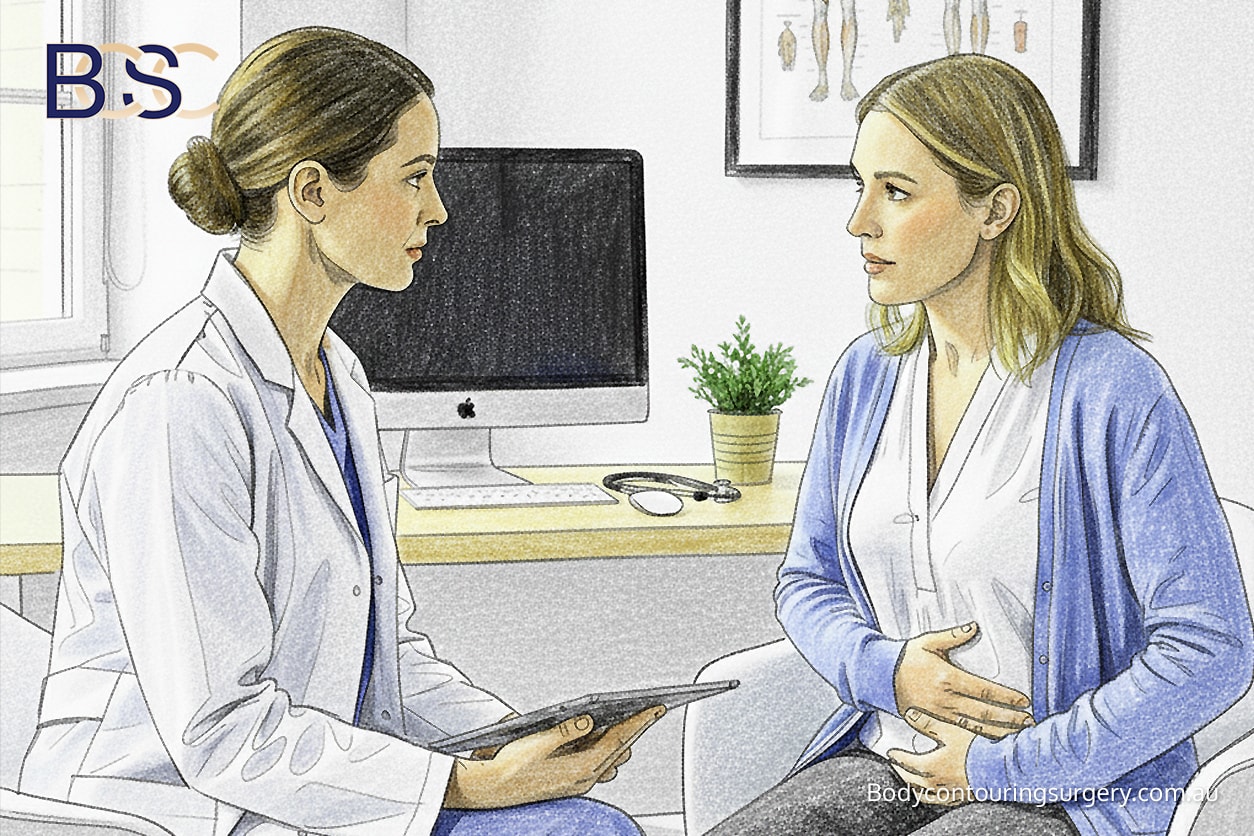
Follow up is an important part of surgery
After discharge, recovery continues through BCSC’s structured follow-up program. Patients typically attend 2–3 follow-up appointments per week during the first two weeks for wound assessments, dressing management, and LED light therapy.
Standard care includes:
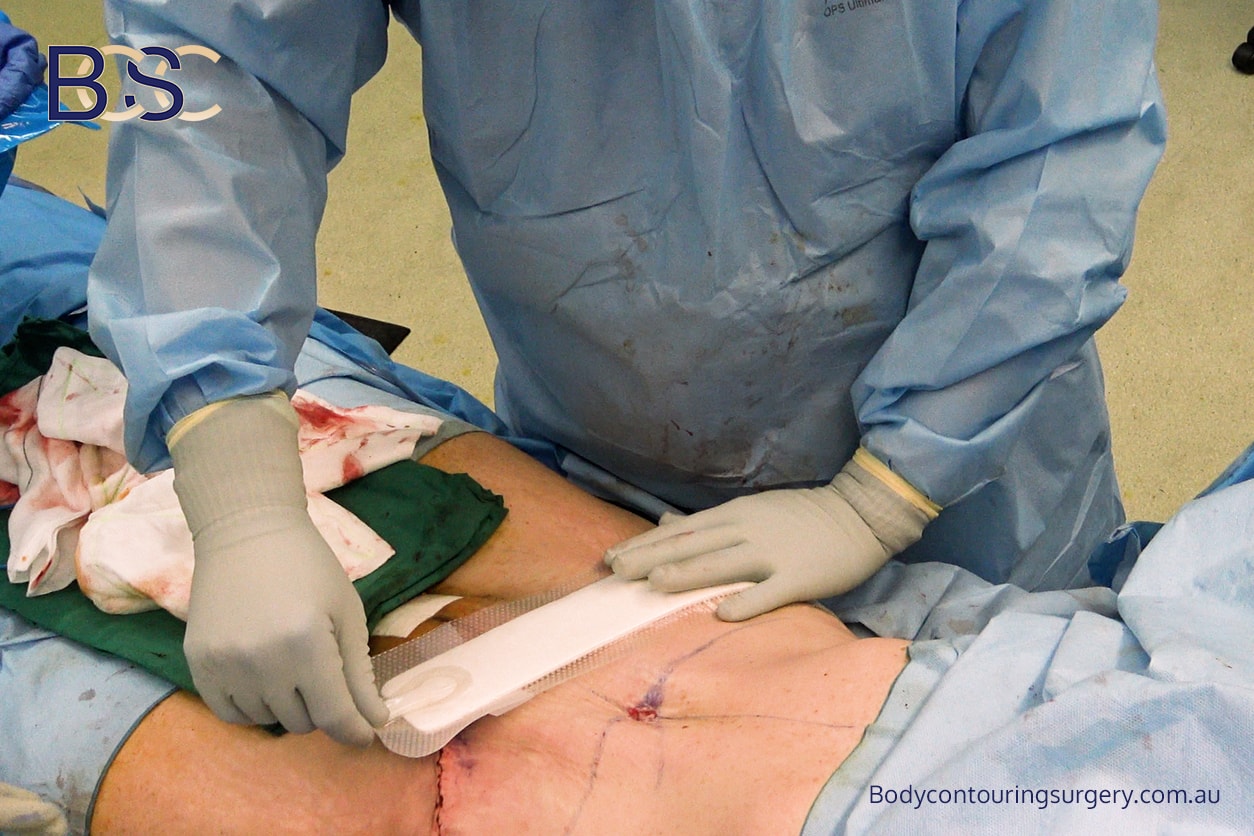
Application of PICO dressing in surgery
- PICO dressing management during the first week to support wound healing.
- Transition to Hypafix tape after Day 7.
- LED light therapy to promote healing and reduce inflammation.
- Regular assessment of compression garments for comfort and fit.
If patients notice redness, unusual or severe pain, or drainage from incisions, they should seek medical advice immediately.
The Recovery Process at Home
Once home, patients should prioritise rest and gentle movement. Short, slow walks promote blood flow and reduce the risk of blood clots.
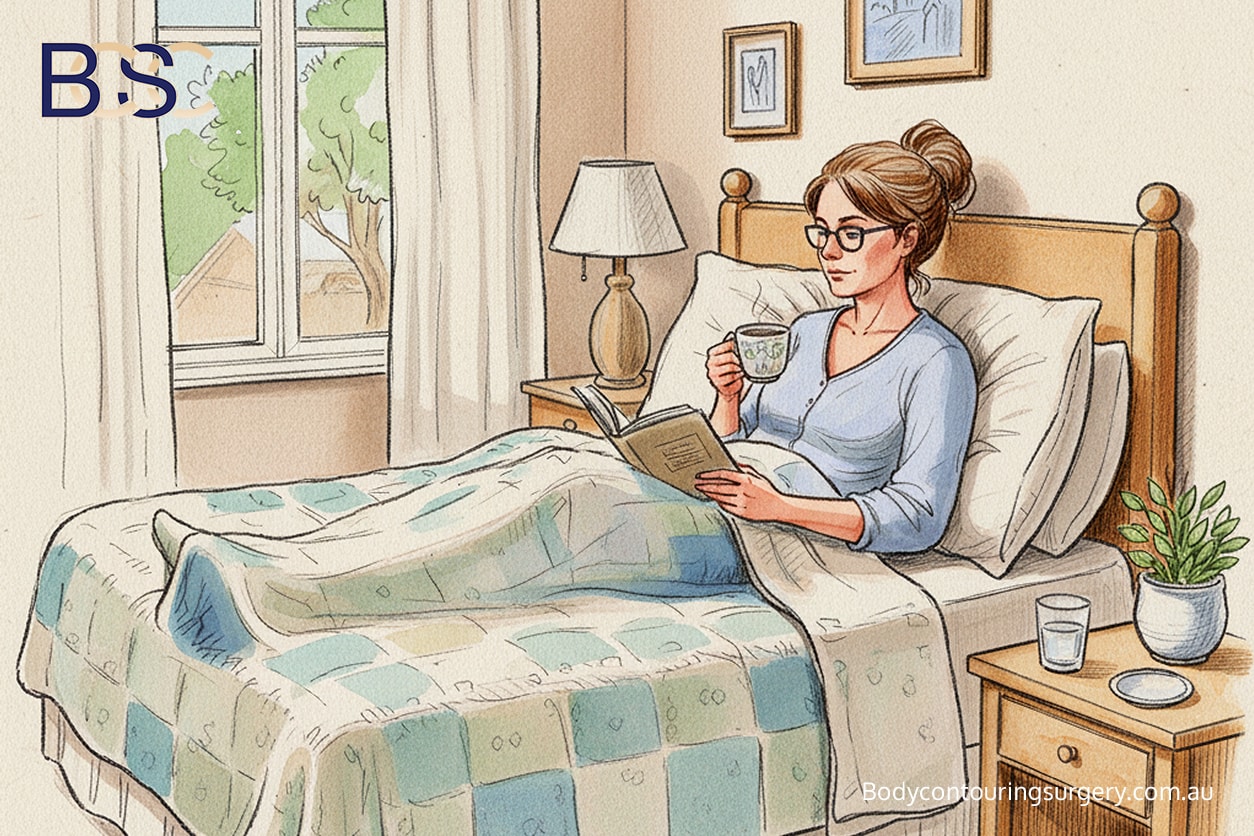
Recovering at home
Patients should:
- Continue wearing compression garments for at least six weeks to reduce swelling and support the abdominal contour.
- Avoid intense physical exercise or heavy lifting for four to six weeks.
- Follow a balanced diet rich in protein and fluids for optimal healing.
- Avoid smoking and maintain a healthy lifestyle to support proper healing.
The abdomen will continue to change as swelling subsides. Temporary changes in skin sensation are common and typically resolve over time. Emotional fluctuations during the first few weeks are normal; patients are encouraged to seek support if needed.
Returning to Normal Activities
Most patients resume light activities or desk-based work within 2–3 weeks post-surgery. Driving can usually resume once prescribed pain medication is no longer required.
Avoid heavy lifting or strenuous workouts until cleared by your surgeon—typically after six weeks post-surgery. Once incisions are healed, patients may begin scar care treatments such as silicone gel or LED therapy under professional guidance.
Recovery time varies depending on individual health and the extent of skin removal. For most individuals, the full recovery process takes between three and six months.
Long-Term Recovery and Maintaining Results

Maintaining your results
Maintaining long-term results after Fleur-de-Lis abdominoplasty surgery involves commitment to self-care. A stable weight, balanced nutrition, and moderate physical activity are key factors.
Changes in body weight can influence outcomes—additional weight loss may cause remaining skin, while weight gain can stretch tissues. The procedure’s purpose is to remove excess skin, tighten underlying abdominal muscles, and treat function. Each patient’s outcome will differ, and maintaining realistic expectations is essential.
Routine follow-up visits occur at 1, 3, 6, and 12 months post-surgery. Telehealth appointments are available when appropriate.
Managing Potential Risks and Complications
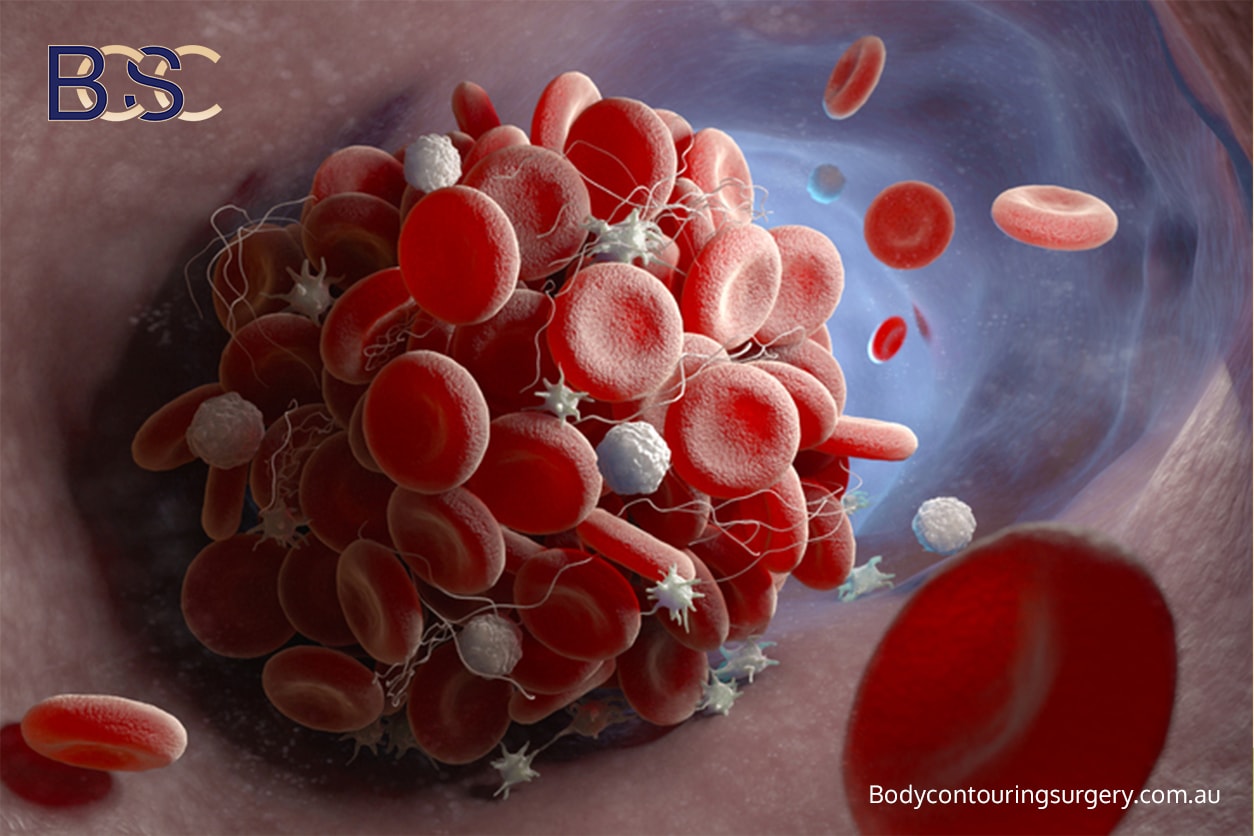
Blood clot
All surgical procedures carry risks. Possible complications following Fleur-de-Lis abdominoplasty include:
- Delayed wound healing or minor wound separation
- Infection or irritation
- Seroma (fluid accumulation)
- Blood clots or deep vein thrombosis (DVT)
- Temporary or prolonged changes in skin sensation
Most patients recover without complications by following their care plan closely. If severe pain or unusual symptoms occur, patients should contact their surgical team immediately for review.
BCSC’s structured care model, including LED light therapy and dressing management, supports ongoing recovery and identifies complications early.
Frequently Asked Questions
What is the recovery time for a Fleur-de-Lis abdominoplasty?
The average recovery time is six to eight weeks, but full recovery can take several months. Healing varies between individuals.
How painful is a Fleur-de-Lis tummy tuck (abdominoplasty)?
Some discomfort is expected, especially in the first few weeks. Surgeons provide prescribed pain medication and monitor pain management for patient comfort.
Are there drains after Fleur-de-Lis surgery?
Yes, surgical drains are often used to collect excess fluid during the initial recovery period. They are removed once fluid levels decrease.
How to prepare for a Fleur-de-Lis tummy tuck (abdominoplasty)?
Preparation involves maintaining a healthy diet, avoiding smoking, and reviewing medical history to for general anaesthesia and major surgery.
What is the difference between a Fleur-de-Lis and a traditional tummy tuck (abdominoplasty)?
A Fleur-de-Lis abdominoplasty involves both vertical and horizontal incisions, while a traditional tummy tuck (Abdominoplasty) uses only a horizontal incision. The Fleur-de-Lis technique may suit patients with more extensive skin removal needs.
Summary from the BCSC Surgical Team
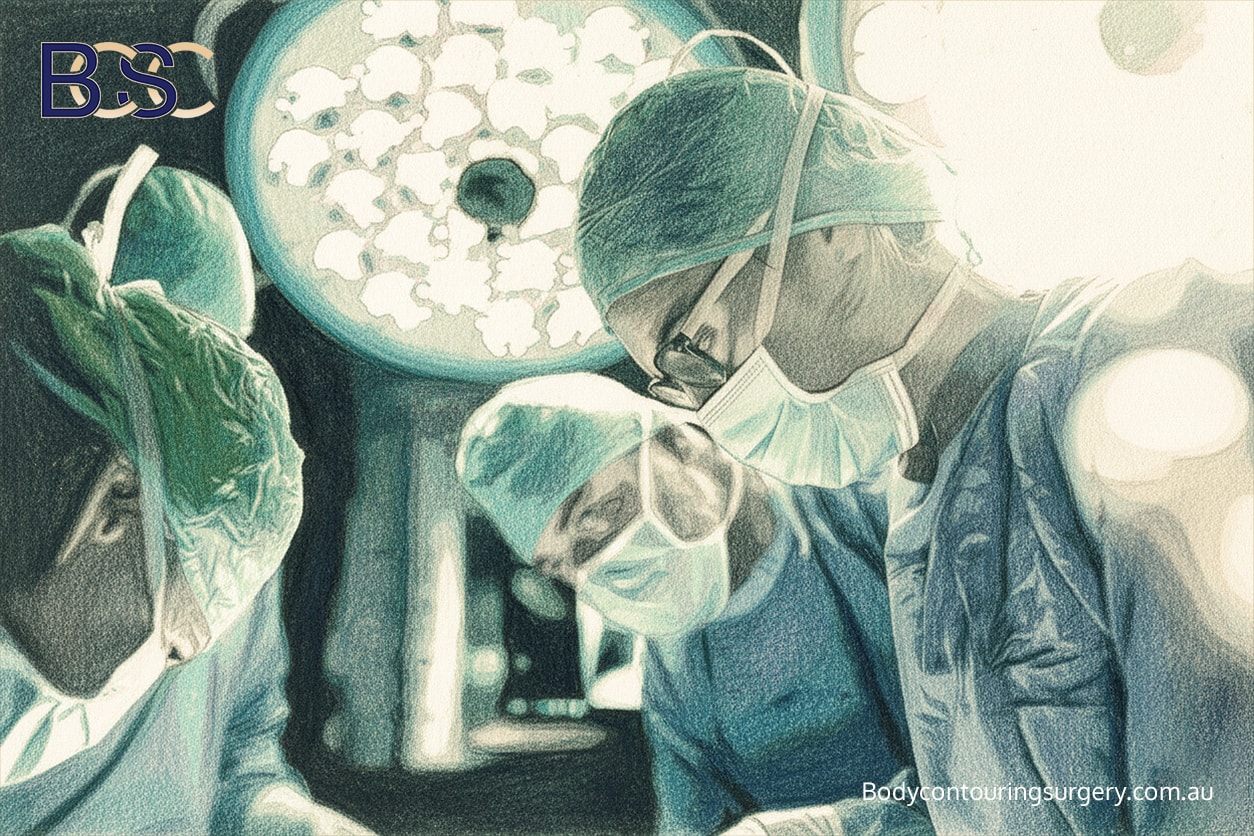
BCSC specialist surgeons
Recovering from Fleur-de-Lis abdominoplasty after weight loss is a gradual process that begins before surgery and continues for several months. Our clinical team provides comprehensive support at each stage—from preoperative preparation and hospital care to LED light therapy and compression garment management.
Every recovery is individual, particularly when fleur de lis surgery is combined with procedures such as liposuction (Suction-assisted lipectomy), hernia repair, or diastasis recti repair. Our focus is on patient safety, medical oversight, and optimal healing.
